Introduction:
Joseph Bronski recently put out an article outlining his case against “Mind Virus Theory” [28]. Basically, he doesn’t think that debate or public opinion affect anything. I agree with this, but he evidences this by marshaling evidence for the stronger claim that public ideology does not effect public behavior. This, I disagree with. The two main things of substance to respond to are the claims that A) ideological beliefs do not cause the public to engage in costly behaviors the beliefs might demand of them, unlike actual viruses that are able to impose real fitness costs; and B) the rising tide of shitlibbery can be explained by a general rise in mental illness caused by relaxed selection pressures and incrementally-accruing levels of mutational load in the gene pool. I provide new evidence addressing his fitness cost test, and point out some general problems with the mutational load explanation.
Navigation:
-Conservatism VS Mutation
—‘Item Difficulties’
—Generation Zyklon
—Genotypic Liberalism VS Mutation
—Media Messaging
-Stated Beliefs VS Incurred Expenses
—Miscegenation
—Feminism
—Environmentalism
—Anti-Natalism
——Desired Fertility VS Personality Profile
-References
Protip: Clicking on a header will return you back to navigation without you needing to scroll around.
Conservatism VS Mutation:
Contrary to Mind Virus Theory where debate changes society, and contrary to Propaganda Theory where the elite impose their top-down changes and reprogram the views of society to be consistent with them after the fact, Bronski proposes an alternative where people merely justify their prejudices with the shifts we’ve seen over time just being the ideological expression of mental illness due to incremental rises in the mutational load of the gene pool [19]:
As the story goes, Europeans industrialized, and we’ve been blessed with all manner of material comfort and advances in medical technology never before available to previous generations. Given this, we’d expect some relaxation in selection pressures where people who would have died off without reproducing in previous eras no longer do so, and so any genetic differences these people have with the survivors shouldn’t be experiencing as great of a negative selection pressure as it once has. Indeed, modern day Europeans have more deleterious mutations than Africans despite the fact that they also have less overall genetic diversity due to the out of Africa bottleneck [20]. Moreover, we also know that the difference is recent; one might expect lower overall population sizes among ancient Europeans to mean less effective purifying selection, but as it turns out, there was no difference [21 & 22]. Most measured psychological traits have some degree of heritability to them [23], and so one might expect that some are more adaptive than others, and that as selection relaxes, previously-maladaptive traits are suddenly able to survive. As the theory goes, the least-essential functions are the first to give way. First to go is anything promoting group survival. Liberals care most about care and harm-avoidance and fairness and safety [24] while Conservative morality is based in a greater diversity of values, such as authority and purity and loyalty in addition to mere care and fairness. Next to come are various personal mental illnesses where people get depressed and kill themselves, or become left handed, which is rather benign. Finally, one’s cells themselves revolt, and various cancers develop. The development of Liberalism, it is said, is just the rise of the first of the three.
It makes sense to express this data correlationally, and the state-level data certainly gives cause for pause, but with the n = 5 generations we’re looking at, this itself isn’t the most impressive thing. The variety of indicators can give us confidence that it is actually mutational load that has had an increase across the generations, but ceteris paribus, the age data only puts mutational load on the table rather than eliminating other explanations. If something else were causing an increase in wokeness, you’d see basically the same correlation if there were a rise in mutational load at the same time, and it’s not like we’ve seen too wild a change in elite composition that could plausibly interrupt the process of society catching up to the coup of the 30s and 60s.
As for the enormous correlation between left-handedness and Conservatism at the state level [25], this should give more cause for pause:
Impressive as this is as result may be (left handedness may not be a great measure of mutational load at the individual level, but when you aggregate many people, general mutational load will be the only systemic correlate of traits resulting from specific sets of mutations), one must remember that state-level variance in propaganda suffers enormously from range restriction, as there are no meaningful regional-level differences in elites or local media production / consumption which could reasonably be expected to compete with mutational load in explaining variance.
Here are some hypotheses one might posit from this:
The national level correlation between shitlibbery and left handedness / mutational load should be a lot smaller than the state level correlation.
The national-level correlation between shitlibbery and left handedness should be increasing over time with the rise of globalization.
Variance in knowledge of English should mediate #2.
In the case that propaganda doesn’t matter, a strong prediction and test of causality would be that English prevalence should not correlate with national wokeness when national mutational load is controlled for, as Propaganda Theory would acknowledge low English prevalence as basically being a vaccine against shitlib propaganda which promotes the production and consumption of local media rather than global media.
‘Item Difficulties’:
Let's say there's some general wokeness factor w, and that various beliefs (feminism, gay rights, trans rights, racial egalitarianism, anti-natalism, democracy, environmentalism, socialism, etc) load in it to various degrees and have different 'item difficulties' (e.g.—somebody who believes in both gay rights and trans rights—is more woke than—somebody who only believes in gay rights—but—somebody who believes in trans rights but not gay rights—is more extremely woke than—somebody who believes in gay rights but not trans rights; if wokeness were an intelligence subtest and shitlibs were superior to nazis, trans rights and pedophilia would be the more difficult items).
If wokeness is just the political expression of mental illness resulting from mutation, one would expect to see the various items become 'less difficult' with time, but would expect the rank orderings of item difficulties to remain constant. If the rank orderings of item difficulties changes however, then we know that mutational load has nothing to do with the observed changes in rank.
No sauce, but I think this has happened with socialism. Socialism used to be one of the 'easier' items, but now it's one of the harder items.
Historical comparison may be difficult, but there's an analog in cross-country comparisons. Rank countries on the wokeness of their environmental policy, their feminist policy, gay policy, racial policy, etc. Compute a bunch of general wokeness factors: one for each indicator; each factor in a given factor-indicator pair doesn't use the indicator in question to compute the factor. Correcting for measurement error in assessing policy wokeness, the correlation between general wokeness and specific wokeness should give an upper bound for the degree to which each specific policy area is affected by mutational load; it'll be lower than the upper bound to whatever degree general wokeness isn't affected by mutational load.
Generation Zyklon:
The difference between the national-level correlation and the cross-time correlation may not even be as high as one would expect from the range restriction hypothesis, as we may be overestimating the cross-time correlation. We need to control for The Great Replacement. Generation Z is the first minority-White generation in American history [26], and yet 2022 exit polling data finds that they vote slightly more Republican than Millenials do [27]:
Do the math, and that adds up to the White cohort of generation Zyklon having a large a large rightward shift. This is consistent with the internet era marking the first time in over a century that local-level elites have been worth a damn. Unless we’re to count all the Mestizos as halting the rising tide of mutational load, n = 6 has already reduced the rank-order correlation from 1.0 to 0.94.
Open R and type: “cor(c(1,2,3,4,5,6),c(1,2,3,5,4,6))”
Genotypic Liberalism VS Mutation:
It’s not clear that the rising tide of mutational load should even lead us to predict that the shitlib genotype is increasing in prevalence, as conservatives have more kids than liberals [🔗]. The effect of mutation has to be weighed against the gap in fertility.
Industrialization and welfare may have reduced selection against individuals high in mutational load, but organisms still have a variety of their own defenses against mutation. Melanin and telomeres protect against the sun. The testicles have darker skin than the rest of the body, and we’re spending more time than ever indoors and wearing pants. Cancers only develop when cell systems fail to detect and repair mutations and when the rest of your body fails to detect and target the mutants. Only one of your 30 trillion cells has to go haywire for one of them to start ignoring the suicide order and live for themselves; the chance that the gamete that fertilizes the egg is one of these mutants is quite small. The probability of fertilization is probably even smaller for the set of mutant sperm than the set of non-mutant sperm given the harsh, acidic environment of the vagina/uterus. Even should one of them manage to win the baby race, genetic drift alone should stop many of the mutants from passing along the mutated portion of their genomes.
Intuitively, given the magnitude of the fertility differences, one would expect the effect of old-fashioned fertility-based selection to be the more important factor for determining the derivative of genotypic liberalism WRT time.
We could posit an epicycle where the liberal personality profile takes greater enjoyment in the company of children [🔗], and where this defeats the effect that liberal views have on fertility due to the effects of the cases whenever the liberal personality profile is divorced from liberal views, but making use of this particular defense would force us to acknowledge liberal ideology as affecting fertility decisions.
With all this said, let’s assume a model where the fertility gap is what matters more, and genotypic shitlibbery is declining with time. We don’t know how much, but we’ll say age correlates at -1.0 with genotypic shitlibbery. How much better does the mutational load model predict predict conservatism? Here’s the spreadsheet behind Bronski’s correlation matrix [19]:
There appears to be missing data for a couple of variables, so for any cell with missing data, I just imputed the mean of the non-missing values. Importing the mutational load signals into R, we get the following matrix:
I don’t know if Bronski imputed the missing values differently or what (maybe he just did imputation by linear interpolation, though that kinda feels like cheating), but the correlation matrix this produces looks like this:
I produced factor scores for this 5-variable matrix by running the following:
The PC.factorScores() code is as follows:
and the supporting matrix.PCloadings() code is as follows:
The factor scores correlated with the indicator variables as follows:
The signs of factor loadings in factor analysis can be arbitrary (although the relative signs are not), but good news for us, it looks like the indicator variables’ factor loadings all shared the same sign; we can thus take the factor loadings and multiply by -1 to get greater values indicating higher amounts of mutational load. How do our factor scores correlate with the rank-order of generation age?
How about with generational conservatism?
Now, how does generational conservatism correlate with the rank-order of generation age?
Doesn’t look like there are many sudden shifts in conservatism for us to exploit due to sudden changes in messaging; it’s all pretty gradual. One might consider this quality of smoothness to be a point in favor of mutational load theory. However, conservatism seems to actually change more gradually than does mutational load. Maybe this inequality in linearity is just due to my imputation however. In any case, with little residual variance to go on top of the already-low number of generations, it looks like we have just about zero statistical power to test mutational load against the alternative hypothesis of some other causal factor gradually growing with time. Going only off of the generational conservatism data, one could just as easily argue that global warming is causing increasing liberalism since the left is the party of climate alarmism.
Still, we can try. The semipartial correlation of mutational load with generational conservatism with the rank-order of generational age partialled from mutational load is as follows:
So, assuming we can accept this as even meaning anything, mutation does seem to continue to have some negative correlation with liberalism when the rank order of age is partialled from mutation. It’s strange that the two measures of genotypic conservatism would correlate so negatively across generations. Surely, the increased mutational load among shitlibs (whether newly-accrued or merely inherited) should be part of the variance in genotype that’s selected against?
Media Messaging:
There is one final problem with the mutational load explanation that I’d like to mention. Taking it as gospel, we should expect political views among the population to shift first, with media messaging shifting second as members of the public filter into the elite and order a change in media messaging. Zach Goldberg collected the longitudinal data on this question a while ago and found the opposite [10]; shifting media messaging drives shifting shitlibbery, and we didn’t suddenly birth a new crop of mutants in under a decade.
Stated Belief VS Incurred Expenses:
One of the tests Bronski posits for Mind Virus Theory is whether belief in a political view can persuade somebody to personally bear the burden of various fitness costs.
Worth noting is that should political views not have this effect, then this isn’t only a strike against Mind Virus Theory, but against Propaganda Theory as well. If political views can have this effect, then this isn’t necessarily evidence for either Mind Virus Theory or Propaganda Theory, as you can have one without the other in spite of their mutual requirement of imposing fitness costs. The difference is that Mind Virus Theory lends importance to debate and to the marketplace of ideas and to the history of the development of systems of thought. If Propaganda Theory is true on the other hand, none of that matters and it’s all just random noise that cancels out with random people being convinced of random things and top-down propaganda being the only variable with any systemic effect.
On that note, a mind virus or propaganda campaign can have no greater fitness cost than literally persuading its followers to have less children. Shitlibs are feminists [🔗] and environmentalists [🔗], but do they have less children as demanded by their beliefs? Yes, very much so [🔗]. This isn’t just a conflict between financial utility and biological utility either, as they also pay premiums for electric vehicles and hybrids despite otherwise being more frugal on car purchases [🔗]. The gap in fertility is also in spite of a personality profile that ordinarily takes greater joy in the company of children [🔗]. WRT neighborhood segregation, there is no gap in neighborhood demographics among conservatives and liberals, but liberals are more likely to swipe right on Blacks when dating [🔗]. The difference between the two results is that there is evidence for the epicycle one would need to dismiss one null result while there is evidence against the epicycles one would need to dismiss the other.
The fitness cost test can also be generalized to the regional level: One thing that could be tested is whether state-level fertility and state-level shitlibbery still correlate when state-level left handedness is controlled for (preferably, this should be tested at the national level [🔗]).
Miscegenation:
Whites conservatives are less likely than White liberals to state a preference for Black romantic partners [8 & 11]. Naïvely, this also seems consistent with the differences in levels of stated racial bias [10, Figure 4.10]:
However, are White conservatives just being more honest than White liberals, or is the difference genuine? Well, White liberals are just as likely to live around Blacks as White conservatives [9]. Case closed, right? Not quite. While this is true, it is also true that White conservatives are more likely to reject Blacks in online dating [11]. General differences in selectivity cannot account for this [11], and as previously established, differences in local demographics cannot account for this either [9]. Why the disparity? Shitlibs are to be expected to live in Whiter neighborhoods than you’d expect from shitlib racism ceteris paribus, as Whiter neighborhoods are wealthier [5], and shitlibs make slightly more money even without controlling for racial demographics [5].
Needless to say, miscegenation is an enormous fitness cost. Genetic Similarity Theory aside [for more, see reference 15], miscegenation is the second-strongest predictor of divorce (second only to a partner having an anxiety disorder) in the CDC’s National Survey of Family Growth [14], mixed-race couples in Canada have 2.94 and 2.34 times the rate of mutual assault that White and non-White couples have respectively [13], and Whites are the most attractive group in online dating [12].
It is admittedly pretty convenient that the wealth effect would so perfectly counteract the effect of ideology, but the difference is that there is evidence for my epicycle while there is evidence against the epicycles one would have to posit in order to excuse the gap in miscegenation.
Feminism:
As of July 2020, 61% of American women are self-described feminists, with feminism being more common among Democrats [1]:
Among the positive attributes Democrat women attribute to Feminism, “empowering” tops the list [1]:
Feminist life priorities of putting career and education before marriage and child rearing are also, surprise surprise, associated with lower stated willingness of women to have children [2]:
Environmentalism:
Democrats state that they view climate change as a greater world threat than do Republicans [3]:
Democrats also state a greater willingness to incur personal costs in order to protect the environment [4, p.69]:
Stated belief in and fear of climate change is also, surprise surprise, associated with lower stated willingness to have children [2]:
Stated willingness also appears to translate into incurred financial costs. Democrats are more likely to spend extra on APTs (electric vehicles and hybrids), despite otherwise preferring smaller sedans and utility vehicles; Republicans on the other hand, despite being poorer [5], have a greater preference for luxury cars and for large SUVs & pickup trucks [6]:
Anti-Natalism:
As we’ve seen thus far, shitlibs claim to be feminists and environmentalists, they claim to prioritize their education and careers over marriage and child reading, they claim to believe that children are bad for the environment, and they claim to be willing to incur personal financial/time expenses to fight climate change, but do they actually have less children? Yes. Edward Dutton recently wrote an entire book on this question; some relevant findings are as follows [7, ch.5]:
Conservatives have more children than liberals.
This has been replicated repeatedly in many datasets from many countries.
This has been true for a long time.
The effect sizes are pretty big and have been getting larger with time.
Extreme conservatives have more children than moderate conservatives and extreme liberals have less children than moderate liberals; no non-linearity.
Desired Fertility & Ideological Personality Profile:
Even this undersells the findings. Openness and ideology aside, the conservative personality profile has a lower desire for children. To recap, compared to self-rated liberals, self-rated conservatives tend to be more conscientious, less open, less neurotic, less agreeable, and less extraverted [16]:
WRT Trump support in particular, Trump supporters are less open, more conscientious, less agreeable, more extraverted, and less neurotic [17]:
Now, the best study I’ve found on how personality relates to fertility motivation is Personality and voluntary childlessness [18]. 644 people were asked to rate the applicability of the following motivations for childlessness, and varimax rotation was applied to produce the following 5 factors [18]:
We’re not interested in ideological motivations here, so we’ll be ignoring the 5th factor, and we’ll be ignoring the 2nd factor as well, because somebody who likes children and wants children may still choose not to have them for these kinds of reasons. That leaves factors 1, 3, and 4. The significant loadings that the big 5 personality traits had on the five motivation factors were as follows [18]:
No trait loaded significantly on the first factor. Conscientiousness was the only significant loading on the third factor, so conservatives lose on that one. Agreeableness is the largest loading on the fourth factor, and the other traits cannot overpower it even assuming no collinearity. It’s unclear who even wins on extraversion however, so we might ignore that one as well. Going purely on personality and enjoyment of the company of children, we’d expect shitlibs to have more kids, but the ideological motivation is strong enough that the opposite is the case in spite of this and in spite of the wealth gap.
That the ideological motivations constitute a separate factor is also interesting and suggests that these people aren’t just justifying their financial motivations with the same reasoning that others usually give.
References:
Barroso, A. (2020). 61% of U.S. women say ‘feminist’ describes them well; many see feminism as empowering, polarizing. Pew Research Center. Retrieved from https://www.pewresearch.org/short-reads/2020/07/07/61-of-u-s-women-say-feminist-describes-them-well-many-see-feminism-as-empowering-polarizing/
Karuga, F. F., Szmyd, B., Petroniec, K., Walter, A., Pawełczyk, A., Sochal, M., ... & Gabryelska, A. (2022). The Causes and Role of Antinatalism in Poland in the Context of Climate Change, Obstetric Care, and Mental Health. International Journal of Environmental Research and Public Health, 19(20), 13575. Retrieved from https://www.ncbi.nlm.nih.gov/pmc/articles/PMC9602747/pdf/ijerph-19-13575.pdf
Tyson, A., Funk, C., & Kennedy, B. (2023). What the data says about Americans’ views of climate change. Pew Research Center. Retrieved from https://www.pewresearch.org/short-reads/2023/04/18/for-earth-day-key-facts-about-americans-views-of-climate-change-and-renewable-energy/
Doherty, C., Kiley, J., & Johnson, B. (2017). Political Typology Reveals Deep Fissures on the Right and Left. Pew Research Center. Retrieved from https://www.pewresearch.org/politics/wp-content/uploads/sites/4/2018/09/10-24-2017-Typology-release.pdf
Kirkegaard, E. O., & Pesta, B. J. (2019). Smart and Poor, or Rich and Dull? A US County-Level Analysis of the Relationship between IQ and Presidential-Election Voting Behavior. Mankind Quarterly, 60(2). Retrieved from https://not-equal.org/content/pdf/misc/Kirkegaard2019.pdf
Howard, B. (2020). Vehicles And Voting: What Your Car Might Say About How You’ll Vote. Forbes. Retrieved from https://www.forbes.com/wheels/news/what-your-car-might-say-about-how-you-vote/
Dutton, E., & Rayner-Hilles, J. O. A. (2022). The past is a future country: The coming conservative demographic revolution (Vol. 76). Andrews UK Limited. Retrieved from https://not-equal.org/content/pdf/misc/Dutton2022.pdf
Eastwick, P. W., Richeson, J. A., Son, D., & Finkel, E. J. (2009). Is love colorblind? Political orientation and interracial romantic desire. Personality and Social Psychology Bulletin, 35(9), 1258-1268. Retrieved from http://sci-hub.ru/https://doi.org/10.1177/0146167209338524
Kaufmann, E. (2023). White flight from immigration?: Attitudes to diversity and white residential choice. Social Science Quarterly. Retrieved from https://not-equal.org/content/pdf/misc/Kaufmann2023.pdf
Goldberg, Z. (2022). Explaining Shifts in White Racial Liberalism: The Role of Collective Moral Emotions and Media Effects. Dissertation, Georgia State University. Retrieved from https://not-equal.org/content/pdf/misc/Goldberg2022.pdf
Anderson, A., Goel, S., Huber, G., Malhotra, N., & Watts, D. J. (2014). Political ideology and racial preferences in online dating. Sociological Science, 1, 28. Retrieved from https://not-equal.org/content/pdf/misc/10.15195.v1.a3.pdf
Rudder, C. (2009). How Your Race Affects The Messages You Get. OkTrends. Retrieved from https://gwern.net/doc/psychology/okcupid/howyourraceaffectsthemessagesyouget.html
Fusco, R. A. (2010). Intimate partner violence in interracial couples: A comparison to White and ethnic minority monoracial couples. Journal of interpersonal violence, 25(10), 1785-1800. Retrieved from https://sci-hub.ru/https:/doi.org/10.1177/0886260509354510
Bramlett, M. D., & Mosher, W. D. (2002). Cohabitation, marriage, divorce, and remarriage in the United States. NCHS. Retrieved from https://www.cdc.gov/nchs/data/series/sr_23/sr23_022.pdf
Salter, F. (2017). On genetic interests: family, ethnicity and humanity in an age of mass migration. Routledge. Retrieved from https://ia800704.us.archive.org/22/items/OnGeneticInterestsFamilyEthnicityAndHumanityInAnAgeOfMassMigration2006ByFrankKempSalter/On%20Genetic%20Interests%20-%20Family%2C%20Ethnicity%2C%20and%20Humanity%20in%20an%20Age%20of%20Mass%20Migration%20%282006%29%20by%20Frank%20Kemp%20Salter.pdf
Fatke, M. (2017). Personality traits and political ideology: A first global assessment. Political Psychology, 38(5), 881-899. Retrieved from https://sci-hub.ru/https://doi.org/10.1111/pops.12347
Fortunato, D., Hibbing, M. V., & Mondak, J. J. (2018). The Trump Draw: Voter Personality and Support for Donald Trump in the 2016 Republican Nomination Campaign. American Politics Research, 46(5), 785–810. Retrieved from https://sci-hub.ru/https://doi.org/10.1177/1532673X18765190
Avison, M., & Furnham, A. (2015). Personality and voluntary childlessness. Journal of Population Research, 32(1), 45–67. Retrieved from https://sci-hub.ru/https://doi.org/10.1007/s12546-014-9140-6
Bronski, J. (2023). Decline in Conservatism Between Generations Correlates Highly with Potential Signals of Mutational Load. Exousiology Substack. Retrieved from https://www.josephbronski.com/p/decline-in-conservatism-between-generations
Lohmueller, K. E., Indap, A. R., Schmidt, S., Boyko, A. R., Hernandez, R. D., Hubisz, M. J., ... & Bustamante, C. D. (2008). Proportionally more deleterious genetic variation in European than in African populations. Nature, 451(7181), 994-997. Retrieved from https://sci-hub.ru/https://doi.org/10.1038/nature06611
Do, R., Balick, D., Li, H., Adzhubei, I., Sunyaev, S., & Reich, D. (2015). No evidence that selection has been less effective at removing deleterious mutations in Europeans than in Africans. Nature genetics, 47(2), 126-131. Retrieved from https://sci-hub.ru/https://doi.org/10.1038/ng.3186
Simons, Y. B., Turchin, M. C., Pritchard, J. K., & Sella, G. (2014). The deleterious mutation load is insensitive to recent population history. Nature genetics, 46(3), 220-224. Retrieved from https://sci-hub.ru/https://doi.org/10.1038/ng.2896
TJ, B. (2003). Genetic and environmental influences on human psychological differences. J Neurobiol, 54, 4-45. Retrieved from https://sci-hub.ru/https://doi.org/10.1002/neu.10160
Kivikangas, M., Fernández-Castilla, B., Järvelä, S., Ravaja, N., & Lönnqvist, J. E. (2021). Moral Foundations and Political Orientation. Retrieved from https://not-equal.org/content/pdf/misc/Kivikangas2021.pdf
McCann, S. J. (2019). Handedness predicts Conservative-Republican preference and eliminates relations of Big Five personality to political orientation using the 48 contiguous American states as analytical units. Laterality: Asymmetries of Body, Brain and Cognition, 24(3), 289-319. Retrieved from https://sci-hub.ru/10.1080/1357650X.2018.1508214
Frey, W. H. (2018). THE MILLENNIAL GENERATION: A demographic bridge to America’s diverse future. The Brookings Institute. Retrieved from https://www.brookings.edu/wp-content/uploads/2018/01/2018-jan_brookings-metro_millennials-a-demographic-bridge-to-americas-diverse-future.pdf
NBC News (2022). Exit Polls 2022. Retrieved from https://www.nbcnews.com/politics/2022-elections/exit-polls
Bronski, J. (2023). Decline in Conservatism Between Generations Correlates Highly with Potential Signals of Mutational Load. Exousiology Substack. Retrieved from https://www.josephbronski.com/p/what-weve-discovered-so-far-mind





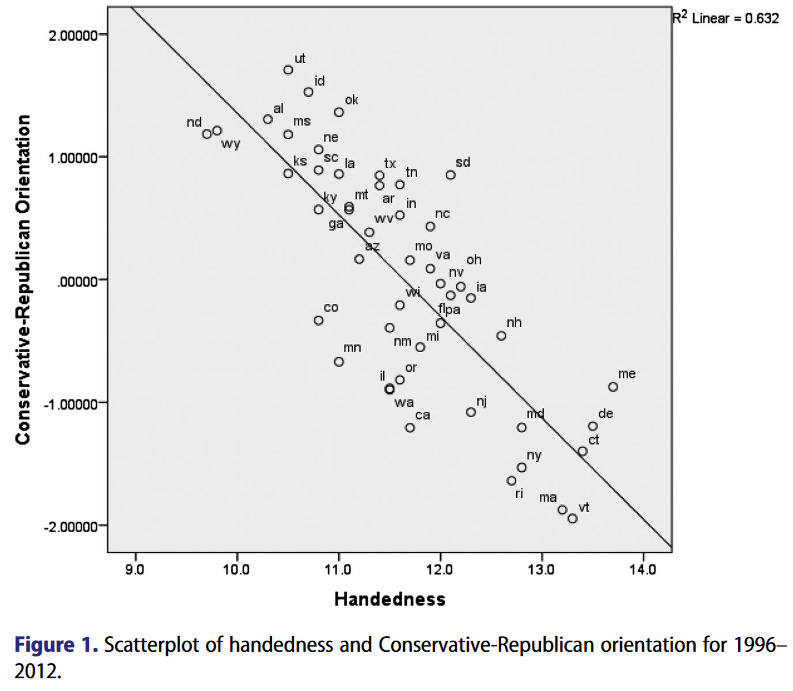













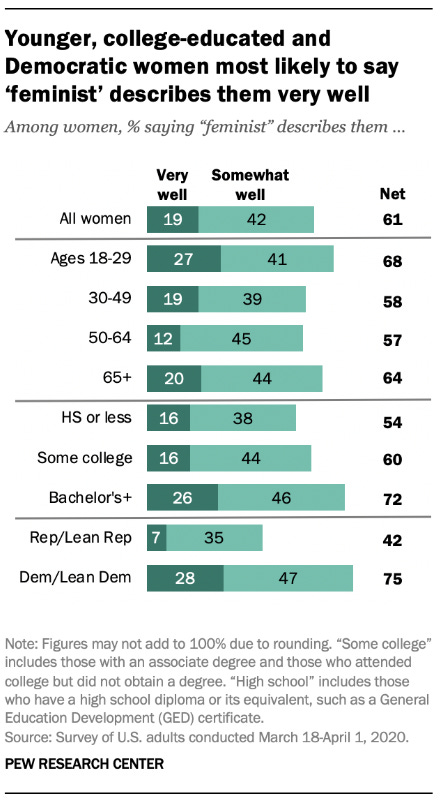


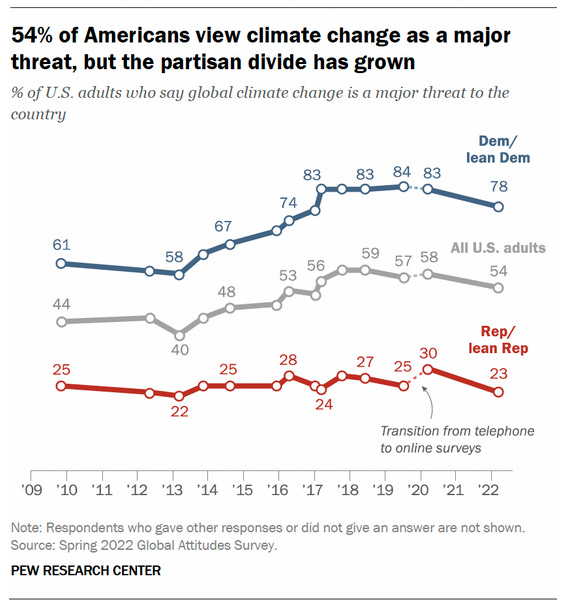

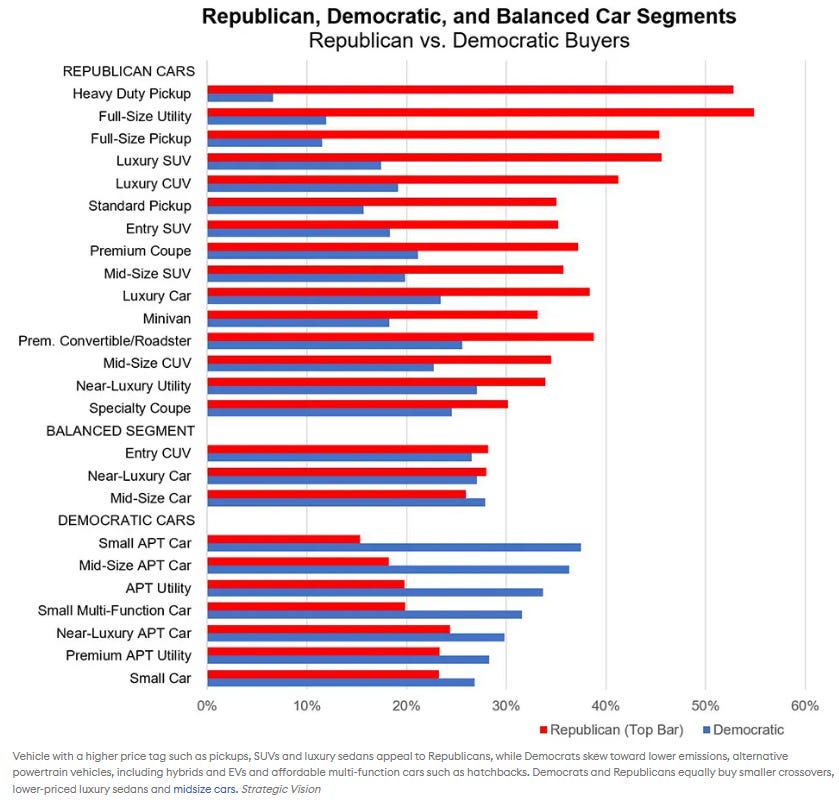


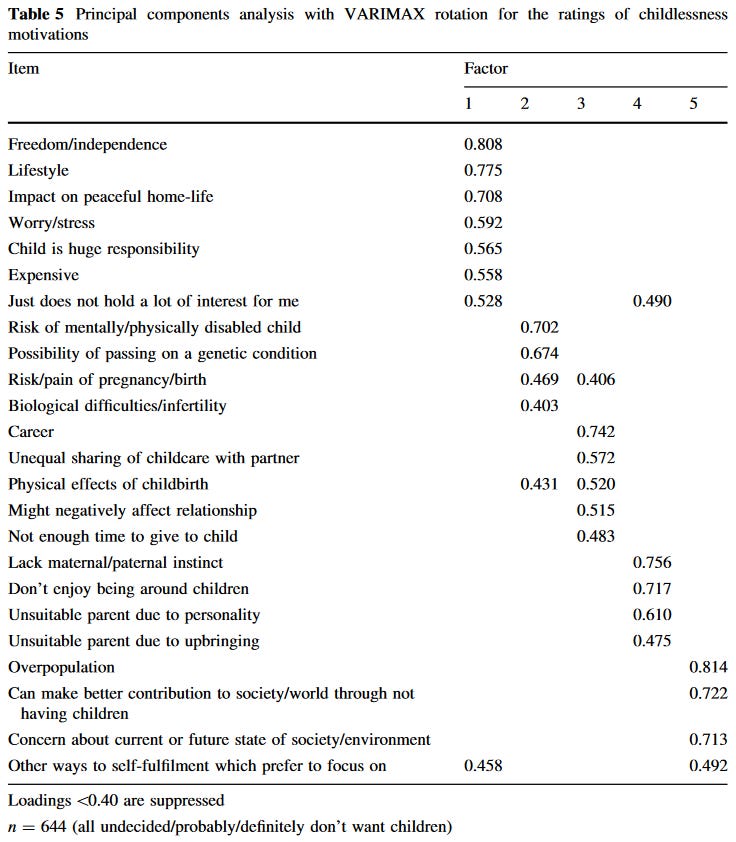


Very intresting!